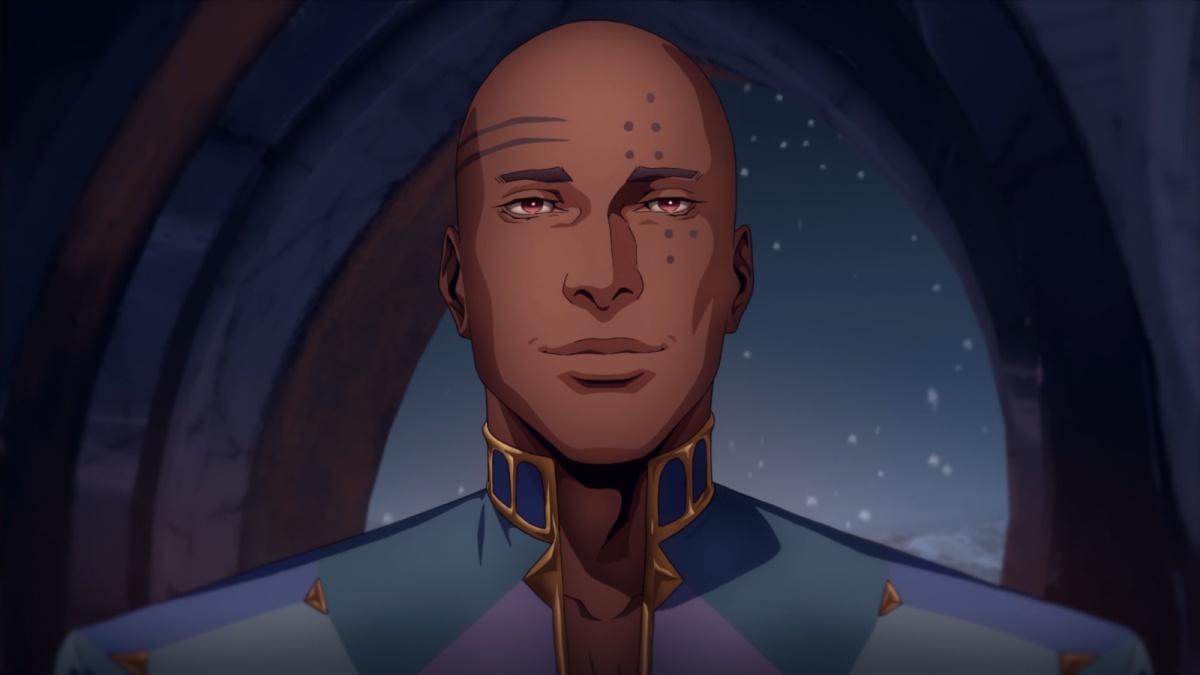‘The Last Of Us’ Isn’t Unique in Breaking the “Video Game Adaptation Curse”
Thank you, Netflix Castlevania, for giving us Isaac. <333

With so much buzz surrounding HBO’s The Last of Us, an old discussion has inevitably resurfaced: that of the “video game adaptation curse.” That “curse” began with the infamous Super Mario Bros. movie in 1993, about which Bob Hoskins (who played Mario), feeling a bit dejected, said in an interview, “I used to play King Lear …”
The curse in question is the result of what happens when you try—and fail—to translate one very distinct medium into another very distinct medium. In a fantastic article by The New Yorker‘s Alex Barasch, the particulars of why this translation is such a challenge are explored by TLOU creator Neil Druckmann and adaptation screenwriter Craig Mazin. They note such things like redefining the plot focus to better suit a passive viewer’s perspective (versus a player’s perspective) and the challenges that follow (such as reducing combat focus, lore-dumping, etc.).
Often, game adaptations fail to stick the landing and end up being box office flops because they inevitably disappoint fans and bewilder newcomers. Mazin cited the 2016 Assassin’s Creed adaptation as an example: not even Michael Fassbender could save that particular movie.
So, considering HBO’s TLOU has been hitting so many marks, a lot of people are claiming that it will be the One Adaptation To Rule Them All. The Curse-Breaker, the precedent, the example that you can make good stories out of video games that appeal to everyone. And while the show is fantastic thus far, fans of animation are jumping to the defense of animated game adaptations, which often go underrepresented as far as “legitimate” media goes:
And this is absolutely a valid critique, especially now, when so many labors of love are being canceled by streaming networks for asinine reasons. Animation is a beautiful thing, and animators truly put their whole heart and souls into each and every project. But it’s also largely thankless, with employees working long hours, being underpaid, and seldom seeing a project take off beyond one or two seasons.
Plus, video games work perfectly within the realm of animation because things that get lost in real-time are only enhanced when animated. For instance, the recent Netflix show Dragon Age: Absolution brought the world of Dragon Age to life in ways that live-action filmmaking couldn’t. The combat was delightful to watch, the dialogue felt natural, and the art was absolutely exquisite. Like the hit show Castlevania before it, Dragon Age: Absolution proved that it IS possible to make great video game adaptations. It’s just that some people are still leery of taking animation “seriously” as a medium, which is truly unfortunate.
The most nuanced take I can think of here is that, instead of knocking one or the other, we can recognize the strengths of both live-action and animated adaptations, and praise both TLOU and projects like Absolution as helping to raise the bar for future adaptations. And with all this talented proof at our disposal, all we can hope for is that we’ll see more funding for animated projects so we can have even more cool adaptations of our faves.
I, for one, would love an animated adaptation of Syberia. All the little tinker-toy robots walking around, the neo-Soviet aesthetics, Kate Walker’s pretty ass? Mmf.
(featured image: Netflix)
Have a tip we should know? [email protected]
